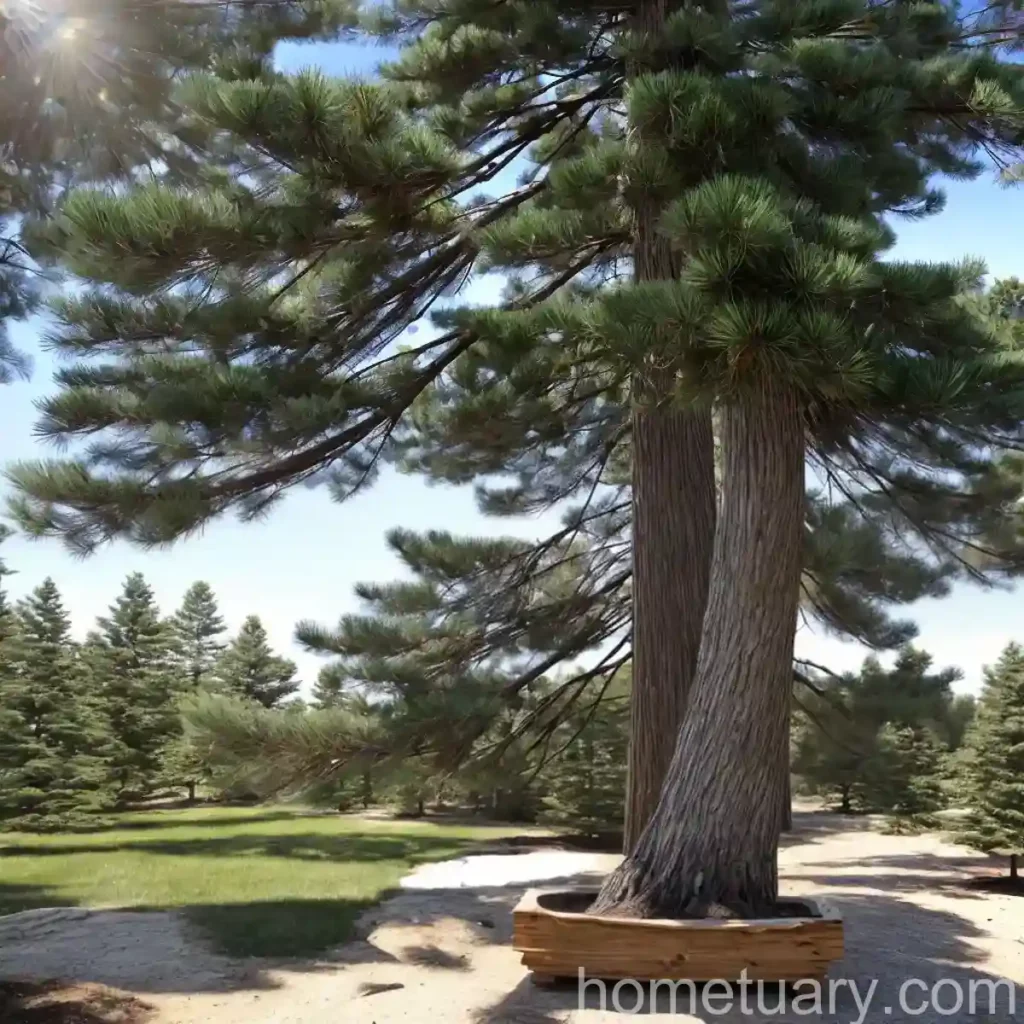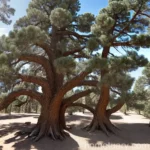What is Plant: Eastern White Pine (Pinus strobus)
Eastern white pine, scientifically known as Pinus strobus, is a majestic evergreen conifer that is native to eastern North America. This coniferous tree is a member of the pine family, Pinaceae, and is valued for its wood, ornamental beauty, and ecological importance. Eastern white pine holds a significant place in the history and ecology of North America and continues to be an essential species for various human and environmental purposes.
In this comprehensive guide, we will delve into the various aspects of eastern white pine, including its description, characteristics, habitat, care, uses, diseases, pests, and much more. By the end of this piece, you will have a thorough understanding of this iconic tree and will appreciate its ecological significance, cultural uses, and the techniques required to cultivate and maintain this remarkable species.
Key Takeaways – Eastern White Pine (Pinus strobus)
Before diving into the specific aspects of eastern white pine, let’s outline the key takeaways for this magnificent conifer:
- Scientific Name: Pinus strobus
- Common Name: Eastern White Pine
- Native Habitat: Eastern North America
- Type: Evergreen Conifer
Now, let’s explore the various facets of this iconic tree.
Plant Description: Eastern White Pine (Pinus strobus)
Eastern white pine is renowned for its towering height, graceful form, and soft, blue-green needles. The tree typically reaches heights of 50 to 80 feet at maturity, with some specimens soaring to over 100 feet. The bark of mature trees is characteristically gray and deeply furrowed. The slender, flexible branches carry clusters of long, soft needles that give the tree a feathery and elegant appearance.
Eastern White Pine Characteristics
Here are some key characteristics of the eastern white pine:
- Needles: Soft, flexible, bluish-green, ranging from 2.5 to 5 inches in length
- Cones: Cylindrical in shape, 4 to 8 inches long, often slightly curved, and featuring a delicate fragrance
- Bark: Gray, deeply furrowed, and with a somewhat scaly texture
- Wood: Lightweight, straight-grained, and easily worked, with a pale, creamy color
- Growth Habit: Fast-growing when young, attaining a broadly pyramidal to conical shape
Eastern White Pine Habitat
The natural range of eastern white pine spans from southeastern Manitoba down to central Minnesota and across to New Brunswick, Nova Scotia, and Maine. It is often found in mixed coniferous and deciduous forests, where it can thrive in a variety of soil types and moisture conditions.
Culture
Cultivating and caring for eastern white pine requires a good understanding of its environmental needs and growth habits. Proper culture and maintenance are essential for ensuring the health and vigor of this iconic tree, whether it is being grown for its ornamental value, ecological benefits, or timber production.
Water
Eastern white pine is relatively adaptable to different moisture levels, displaying good tolerance to both dry and moderately wet conditions once established. However, it typically prefers well-drained, acidic soils and benefits from regular watering, especially during dry spells.
Sunlight
As a native woodland species, eastern white pine is naturally adapted to tolerating varying levels of light. It can thrive in full sun to partial shade, though it generally performs best when provided with ample sunlight.
Fertilizer
While mature eastern white pine trees often do not require fertilization if grown in a natural setting, young trees and those growing in urban areas or disturbed landscapes may benefit from periodic applications of a balanced, slow-release fertilizer. This should be done in moderation to avoid excessive nitrogen levels, which can be detrimental to the tree’s health.
Soil
The ideal soil for eastern white pine is well-drained, acidic, and loamy. While it is somewhat tolerant of different soil types, including sandy or clay soils, it performs best in soils that closely mimic its natural forest habitat. Soil amendments with organic matter can help improve soil structure and fertility, especially in urban or suburban landscapes.
Pruning
Minimal pruning is generally necessary for eastern white pine, as it naturally develops a pleasing, symmetrical form. Any pruning that is carried out should be limited to the removal of dead, damaged, or diseased branches, and should be conducted during the dormant season to prevent excessive sap bleeding.
Uses
Eastern white pine has been cherished for its wide array of uses, contributing to its cultural, economic, and ecological significance. From providing valuable lumber for construction to serving as a specimen tree in landscaping, the uses of this iconic tree are diverse and far-reaching.
Timber
Eastern white pine has long been esteemed for its exceptional timber qualities. The wood is lightweight, straight-grained, and relatively soft, making it easy to work with hand or machine tools. It is commonly used in the construction of furniture, interior trim, paneling, and moldings due to its attractive appearance and ease of finishing.
Landscaping
In addition to its commercial uses, eastern white pine is widely employed in landscaping and horticulture. Its soft, delicate appearance and rapid growth make it an attractive choice for creating windbreaks, screens, and privacy hedges. It also serves as a popular ornamental tree, adding vertical interest and a sense of elegance to a wide range of landscapes.
Ecological Role
From an ecological perspective, eastern white pine plays a crucial role in the forest ecosystem. It provides valuable habitat and food for a variety of wildlife, including birds, mammals, and insects. Furthermore, its shade tolerance and fast growth contribute to the regeneration and sustainable management of forested landscapes.
Propagation
Propagating eastern white pine can be accomplished through various methods, each suited to different purposes and scales.
Seed Propagation
Growing eastern white pine from seed is a common and effective method, particularly for large-scale reforestation projects or timber production. The seeds should be sown in a well-prepared seedbed in the spring and can take several years to develop into transplant-sized seedlings.
Cuttings
For smaller-scale propagation, taking softwood or semi-hardwood cuttings can be a successful method for creating new trees. These cuttings should be taken in early summer and treated with rooting hormones to promote the development of roots.
Container Propagation
Eastern white pine can also be propagated from container-grown stock, which allows for more controlled and targeted results. Container-grown specimens can be readily transplanted into landscapes and provide a way to cultivate genetically diverse trees with known characteristics.
Popularity
Eastern white pine has been a highly esteemed tree since ancient times and continues to maintain its popularity for a multitude of uses. Its aesthetic appeal, rapid growth, and versatile wood have contributed to its widespread cultivation and appreciation.
Cultural Significance
The rich cultural history of eastern white pine dates back to the indigenous tribes of North America, who held the tree in high regard for its spiritual, medicinal, and practical uses. It has also played a significant role in the development of the lumber industry and the settlement of North America.
Modern Application
In contemporary times, eastern white pine remains a popular choice for various applications, including reforestation efforts, landscaping, and the production of wood products. Its adaptability to different soils and climates has further contributed to its widespread cultivation and use.
Common Diseases
While eastern white pine is generally a hardy species, it is susceptible to certain diseases and pests that can impact its health and vigor. Understanding these potential threats is essential for effectively managing and protecting eastern white pine trees.
Disease Diagnosis
Some of the most common diseases that affect eastern white pine include:
- White Pine Blister Rust: A fungal disease that causes yellow to orange blisters on needles, cankers on branches, and impacts overall tree health.
- Needle Blight: Caused by several fungal pathogens, needle blight can lead to the discoloration and shedding of needles, weakening the tree over time.
- Root Rot: Several species of fungi can cause root rot in eastern white pine, leading to poor growth, wilting, and eventual decline.
Common Pests
Eastern white pine can also be targeted by a range of pests, such as:
- White Pine Weevil: This insect can cause damage to the terminal leader, leading to the development of a distinctive hook-like deformity in young trees.
- Pine Sawfly: The larvae of this sawfly species can defoliate pine trees, impacting their growth and vitality.
- Adelgids: These small, aphid-like insects can cause stunted growth and yellowing of needles, particularly on the new growth of eastern white pine.
Botanist’s Tips
Here are some valuable tips for cultivating and caring for eastern white pine:
- Site Selection: Choose a well-drained location with ample sunlight and ample space for the tree to reach its full potential.
- Soil Preparation: Ensure the soil is acidic, well-drained, and rich in organic matter to support healthy growth.
- Pruning: Limit pruning to the removal of dead or diseased branches, and avoid excessive pruning to maintain the tree’s natural form.
- Pest and Disease Monitoring: Regularly inspect trees for signs of pests or diseases and take prompt measures to manage any issues.
Fun Facts
- The eastern white pine has long been a symbol of endurance and resilience, as well as a sacred tree in many Native American cultures.
- It is the state tree of Maine and Michigan, reflecting its cultural and historical significance in these regions.
- The tallest eastern white pine on record stands at an impressive 188 feet, showcasing the towering potential of this majestic species.
Links to External Resources
For more in-depth information on eastern white pine, you can explore the following resources:
- USDA Plants Database
- The Nature Conservancy: Eastern White Pine
- Arbor Day Foundation: Eastern White Pine
- Virginia Tech: Dendrology – Pinus strobus
In conclusion, eastern white pine is a significant and valuable tree species that deserves recognition for its ecological, cultural, and economic contributions. By understanding its characteristics, care requirements, and uses, we can better appreciate and steward this iconic species for future generations.
Whether it’s serving as a source of inspiration in the landscape, providing habitat for wildlife, or supplying materials for construction, eastern white pine holds a special place in the natural world and in the hearts of many who encounter its beauty and resilience.















